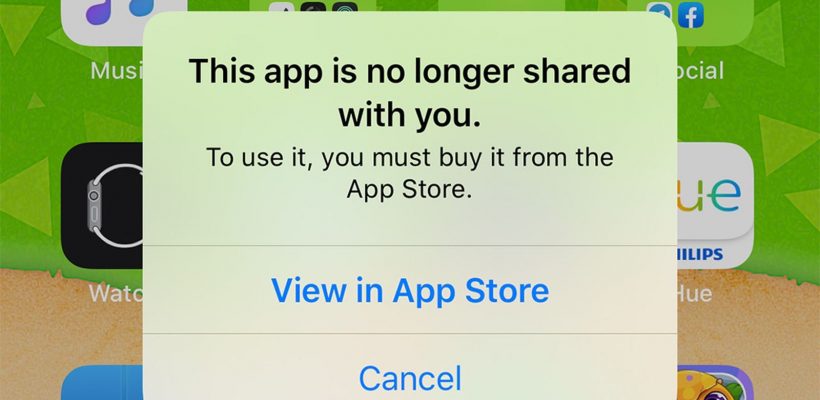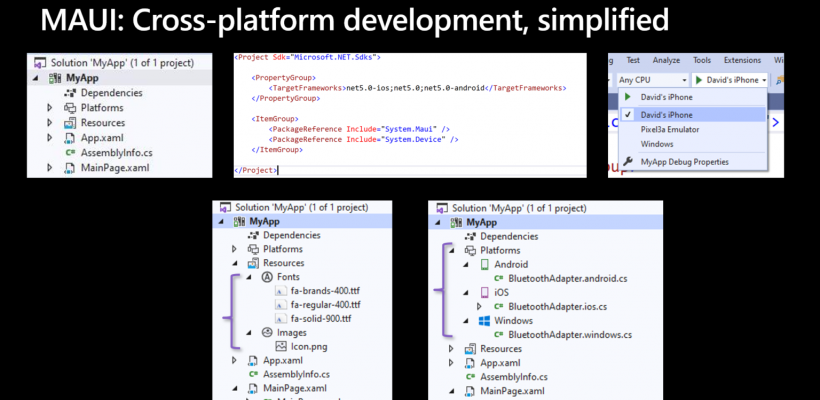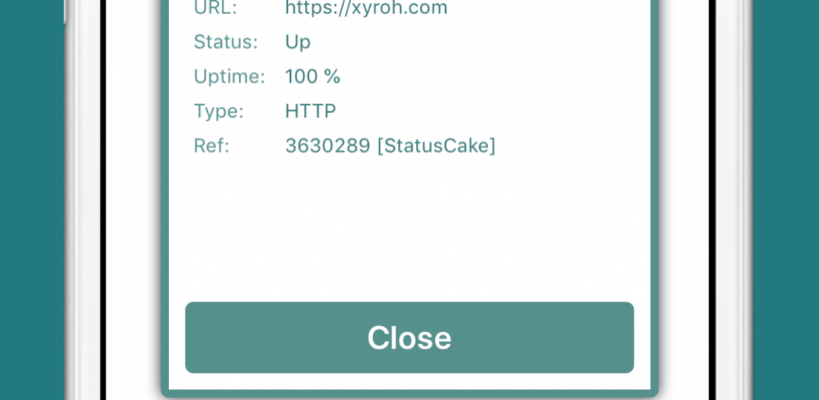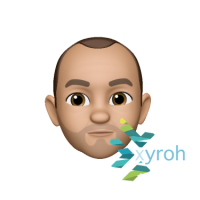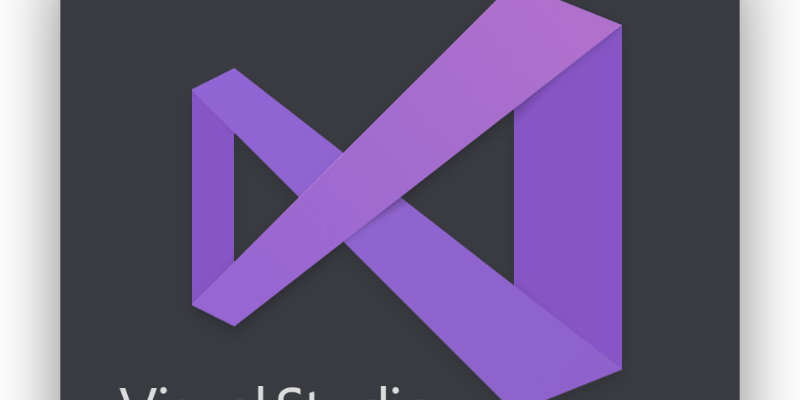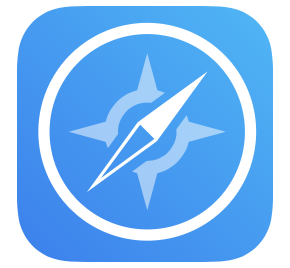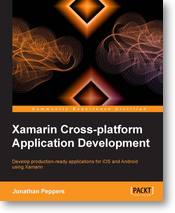How to fix the ‘This app is no longer shared with you’ error
There seems to be a surge of people reporting the ‘This app is no longer shared with you’ message when they open apps on iOS devices. Not sure why, our suspicion is that it’s a server side bug in and around family sharing, but that’s not confirmed.
Deleting the app and reinstalling will work, but you will potentially lose any data that’s stored locally, so our recommendation is to ‘offloads the app. This was introduced as a means to save space on your device by temporarily removing apps that you rarely use, but not losing any data or settings.
So whilst it’s a pain you can offload the app and then immediately restore it to fix this bug, full instructions are over at https://www.idownloadblog…
If this helped you fix the ‘This app is no longer shared with you’ error on your iPhone then would appreciate the share, if you have any other updates or solutions then please hit up the comments and we’ll update the article.
Microsoft’s new cross platform software framework – What does it mean to your business?
Yesterday at the Microsoft Build conference they announced MAUI, the roadmap to their new cross platform software, single codebase framework, quoting from their release;
Introducing .NET Multi-platform App UI:
As we consider what building device applications will look like in a unified .NET, we see many devices across multiple platforms used, from Android and iOS to Windows and macOS. To address this need we are excited to announce a new first-class UI framework for doing just that: .NET Multi-platform App UI, affectionately call .NET MAUI.
This means a lot to us as developers, but what does it mean to you as business owners, decision makers, and end users? To your business?
App languages – how they differ
All computer software (apps are just software applications, all the same really) is traditionally designed to run on it’s intended platform, the Web, Windows PC, Apple Mac, iPhone, Android etc – an app written for one platform will traditionally be written in the language that platform expects, all these platforms have different native languages, ie an app written for one won’t work on another.
In layman’s terms, if you learn French it will stand you in great stead on a holiday to France, but pop next door to Spain and you’re stuck. Unless you learn Spanish too, but that’s twice as much work.
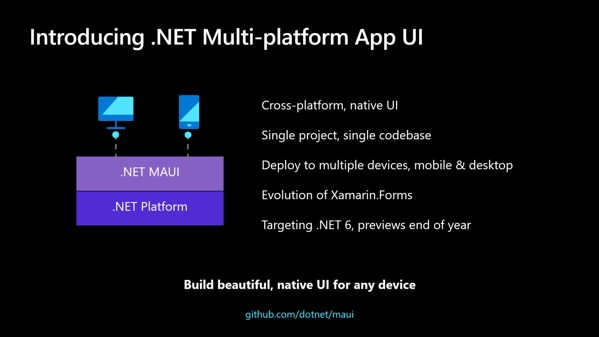
Multiple App Platforms
Which is where us developers come in, most developers speak more than one language, but certainly not all, and in the past you had to be careful that the language choice the developer was making for your project was because it was the right one for your needs. Not because it was the one they knew. But as IT expanded, people started using their own devices, and mobile computing became the norm it stopped being about which platform – Mac vs PC if you will, but which platforms – plural.
So if you ask a developer to create you a mobile app you are probably targeting iPhone and Android, two platforms, two languages (Objective C or Swift, and Java in case you were wondering!) – so that’s actually two apps you need, twice the work, twice the support, twice the cost!!! If only there were some (good – there are bad ways, we don’t do them) way of creating good, native, performant apps on both platforms, from one codebase, one product to support, and only one to pay for – cheaper is better right?
How can Xyroh help?
Well for most cases there is, it’s niche, here at Xyroh we do it, and have spent a lot of time and resources investing in these skills, the platform we use is Xamarin from Microsoft, and in *most* cases, certainly B2B projects it’s perfect – outputting great, custom mobile apps for iPhone, Android, Windows Phone – Tizen even – at good value to your business.
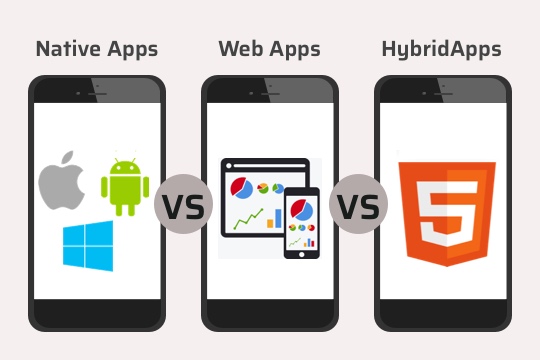
Well that’s what this announcement was about, the next stage. Microsoft’s new MAUI framework will allow us to create line of business apps that run on;
– Android
– iOS (iPhone and iPad)
– Mac OS
– Windows
All from one project, one codebase, one cost – but much more value. So if you have a need for apps, be it a mobile app, a desktop app, or even a web app in your business then we’d love to talk to you.
Related Articles:
– Native App, Hybrid App, or somewhere in between?
– Xamarin Cross Platform Application Development – Book Review
Andy, the founder of Xyroh, is a mobile app developer, specialising in cross platform mobile apps, iphone apps, android apps, as well as web applications and desktop software for business clients across the North East – feel free to contact him to engage his services
Version 1.7 of our ‘Worst’ Server Monitor released
Version 1.7 of our ‘Worst’ Server Monitor is now available, includes support for multiple Status Cake accounts – hit the link to our community boards for release notes and App Store Links, you can also shape the future by suggesting your own ideas and commenting on others – https://clients.xyroh.com…
The ‘Worst’ Server Monitor is a client for a variety of Website Monitoring and Server Uptime services, currently available for iOS and Android, it’s purpose is simple, a quick and fast way of accessing your monitored sites and servers and seeing their status.
Release 1.0 of XyrohLib,
Release 1.0 of XyrohLib, our multi platform C# interface to a number of common crash reporting and logging services;
– Log file recycles at 1MB or at a customisable int (bytes) value, eg
– Can get full log file path back from Lib
Oops – How to fix when you’ve upgraded Visual Studio for Mac / Xamarin iOS and now being forced to upgrade Xcode and to Catalina ????
What went wrong?
So, here’s the scenario, fire up Visual Studio for the Mac, not enough caffeine in the system, an ‘updates’ box pop up, a Xamarin iOS update amongst many, you click ok, then instant regret ????. Why you may ask, an update is good? No? Well not here. Like many developers I have a reluctance to go to Mac OS Catalina (a lot of changes, and too many issues) and am quite happy in the stable, stable land of Mojave. So what have I done?
In essence I’ve upgraded the version of Xamarin iOS from somewhere in the 12.x range to 13.16. I knew the second I’d upgraded it had gone wrong, but opening a Xamarin iOS / Forms project instantly told me. My selected version of Xamarin iOS required an Xcode upgrade to 11.x. Off to the App Store I go, just to confirm, and of course;
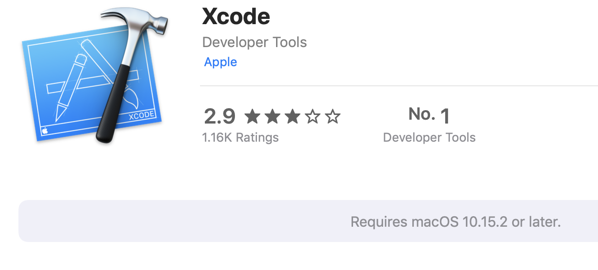
Mojave of course is 10.14, Catalina 10.15, so I have to upgrade right, and lose a day of productivity (or more) with it? Wrong.
The fix
So, the solution, first off come out of Visual Studio for Mac, and then drop to Terminal app. Execute these commands line by line (entering your admin password when required);
rm -rf ~/Library/MonoTouch sudo rm -rf /Library/Frameworks/Xamarin.iOS.framework sudo rm -rf /Developer/MonoTouch sudo pkgutil --forget com.xamarin.monotouch.pkg sudo pkgutil --forget com.xamarin.xamarin-ios-build-host.pkg sudo pkgutil --forget com.xamarin.xamarin.ios.pkg
In the meantime I had downloaded the latest 12.16 release of Xamarin iOS. For me this is https://dl.xamarin.com/Mo… however your requirements may vary. Should be as simple as tweaking the download url to suit, you can find 12.x version numbers over here on the Xamarin iOS 12 release notes page.
Once downloaded simply double click and install the package. Then fire up Visual Studio for Mac and fingers crossed, all worked fine for me.
About me
Andy Flisher is a Mobile App Developer based in the North East of England with over 20 years software development experience. He is available for hire and specialises in cross platform mobile app development, web applications, desktop software, bespoke cloud architecture solutions and providing outsourced project management services.
Arcus Platform version 3.0 updates
Busy start to 2020 for the Askaris Arcus platform, big version 3.0 release translating both the portal and offline tablet interfaces into the end users native language, which will be huge for our client’s Brazilian, Norwegian and other global Operations.
Up next will be a multi-year improvement to the Dropped Object inspection framework, and further translation improvements – including a self learning multi language translation process – this will allow reports to be carried out in a a native language and then proof read and translated into multiple additional languages – another huge time saver.
The Arcus platform is used predominantly in the OIl and Gas sector to facilitate audited regulatory inspections, but as a full Asset Management suite it has uses in many other sectors.
#assetmanagement #inspectionsoftware #askaris #arcus
Find out more at – https://askaris.com/
Chrome OS has stalled out – is there a tablet shaped future for Android?
But Android apps, so far as I can tell, are basically the plan for Chrome. Certainly, Linux environment support is great for enthusiasts and developers, but there are very few commonly-used commercial applications available on Linux, with no sign that will change in the near future.
A comment not so much about Chrome OS, but it’s lack of good tablet optimised applications mirrors that of Android as a whole. The Arcus project I lead for Askaris runs primarily on Android powered tablets, but outside of the Atex rated specialised devices sourcing consistent hardware is a struggle, less and less good Android tablets available, and Chrome OS has probably hindered that, not helped it.
A chicken and an egg, no devices, so no users, so no demand, so no apps. Apple at least has the cash and incentive to have jumped into that cycle and invested / motivated. Outside of Samsung and Google (who keep making poor decisions!) who can do that for Android / Chrome OS?
Updating Apps that Use Web Views – Are you affected?
Updating Apps that Use Web Views – News – Apple Developer:
If your app still embeds web content using the deprecated UIWebView API, we strongly encourage you to update to WKWebView as soon as possible for improved security and reliability. WKWebView ensures that compromised web content doesn’t affect the rest of an app by limiting web processing to the app’s web view. And it’s supported in iOS and macOS, and by Mac Catalyst.
The App Store will no longer accept new apps using UIWebView as of April 2020 and app updates using UIWebView as of December 2020.
In layman terms if your app loads content from the web, eg a webpage or a web application then this could affect you. For Xyroh clients, especially those based on Xamarin forms this should’t be a problem as they already use WkWebView.
Worst affected will be those who have stale apps, or aren’t being regularly supported by the original developers – in those cases please get in touch, we can do an analysis of the original source code, let you know if affected, cost to fix and support going forward, and the side effects of doing nothing – basically let you make an informed decision.
Andy Flisher is a Software Developer based in the North East of England with over 20 years software development experience. He is available for hire and specialises in cross platform mobile app development, web applications, desktop software, bespoke cloud architecture solutions and providing outsourced project management services.
Xamarin Cross Platform Application Development – Book Review
This is a review of the recently published book “Xamarin Cross Platform Application Development” by Jonathan Peppers.
This book is openly marketed at existing, experienced C# developers so it’s certainly not for beginners, and whilst I don’t fall into this category the nature of projects I work in require mostly ‘linear’ development (Web, PHP, Perl, Python, VB etc over the years) so concepts like MVC, MVVM and in particular IOC (Inversion of Control) are newer and less clear. Thankfully this book has resolved that through it’s excellent practical examples.
One area this book doesn’t touch on hugely is the level of planning required for MVC applications, you can’t just ‘jump in and code’, but that’s potentially a book in itself, but what the book does very well for me, is explain the View, ViewModel, Model and Controller concepts in terms of the classes and data layers required. The book also introduces Interfaces (something I always saw as an unnecessary layer of complexity) which I now ‘get’ in terms of flexibility, and in particular to give the developer options in a cross platform environment.
The icing on the cake is ‘Inversion of Control’, whilst the book doesn’t particularly explain this convention in huge detail, I think it is actually to it’s credit, any more and the reader will be bogged down in unnecessary detail and complexity. It basically gives us the service layer that ‘glues’ the application together, allowing use to create and register our ViewModels as Services and thus make them available to use throughout the app with a single line of code. I’m sure that my description is not hugely more constructive than the words in the book themselves, but the working example of the XamChat application completes it.
Which is my main point, am sure many people work differently, but for me working examples of code are what makes it stick in my mind, it helps it all make sense. Throughout this book you will be building bit buy bit a working chat application, firstly in Xamarin.iOS (but using the all important cross platform and code sharing concepts learnt at the beginning of the book), and then re-implementing the same application logic in Xamarin.Android. The nice touch, which some may see as lazy, was that with the Android example you are taken to a certain point and then left to finish off using the examples you already have. A real, and practical exercise which I think will do the reader good. It wouldn’t be a huge leap further to recreate in Windows Phone, for the ultimate practical extension.
The Xamchat application is then extended through the Windows Azure platform to use their backend for data storage (a good example of how the same Interface can be re-used to store on different platforms), and to implement cross platform push notifications.
Lastly there are chapters on using Xamarin Components (including Xamarin.Mobile for Contacts, Camera and Location functionality), and actual App Store submission and their different processes, processes that even the most experienced developer can struggle with (Apple Certificates and Profile expiry anyone!).
In summary, this is an excellent book for any would be cross platform mobile application developer, yes you need a good understanding of C#, MVC and similar concepts, and the individual mobile platforms and general development processes themselves, and those things don’t come over night, but this book binds it all together with real world examples, working code (a novelty for some books) and actual code and methods you can take away and use in the real world.
Buy it, read it, and take as much as you can from it – “Xamarin Cross Platform Application Development” by Jonathan Peppers
Native App, Hybrid App, or somewhere in between?
I quite often get told “I want an app for my business”, not that they “need” one, they want one, which can often be the wrong place to start, as we’re justifying a want by creating the needs. Underneath it all there are many complex technical considerations and decisions to be made, often by us and trusted by the client, but these considerations come on the back of the business’s “needs” not it’s “wants”, and the app platform, is one of these.
So first off, what is a native app, or what app platforms are there? The lines are grey in the middle, so feel free to disagree with these definitions (happy to engage in the debate!) but broadly we have;
- Native Apps – In it’s purest sense these are apps written in the native programming language of the mobile device you’re targeting, eg;
-
- iOS (iPad and iPhone apps) – Uses Objective C (and now Swift)
- Android – Uses Java (not Javascript! More on that below)
- Windows Mobile – C# (pronounced C sharp)
- Blackberry – Java, however not the same as Android (Pre Blackberry 10), however the latest Blackberry Priv handset is in essence an Android device.
- Hybrid Apps (With Native UI) – These include platforms such as Xamarin, or Telerik AppBuilder, which is based on C# and F#, but the end result on each device is a ‘Native’ App using Native UI elements so the app feels at home to users on that platform. The end result is these are compiled down to ‘Native Apps’ on the device so often indistinguishable from true Native Apps.
- Hybrid Apps (With Cross Platform UI) – This is the biggest ‘app’ space at the moment, filled by vendors such as Phonegap / Cordova, Appcelerator Titanium, normally pitched at Web Developers trying to get into the mobile space as it appeals to their existing HTML5 and Javascript skill sets.
- Web Apps – Not really an app! Not in the mobile sense, but a traditional web site hosted and accessible to all and heavily optimised and responsive for mobile users.
So what are the pros and cons, and which do I need! Well there’s the conversation, but sit down with us for a cup of coffee, or engage with us and we’ll look at your “needs” and help you come to an informed decision, but some points to consider;
- So you want a mobile friendly, easily accessible, cheap (relatively) way to engage with a mobile audience? On any device, wherever they are connected. – Then consider a mobile optimised website, no need for app stores, or worrying about platform related decisions, just out there.
- Do you want to engage with the mobile audience? Eg send Push notifications, Know where they are physically located, use the camera, microphone etc? – Then for a good experience you need an App, that has access to the devices hardware, eg GPS, Camera, Microphone. Most Hybrid Apps will allow this, Native Apps without question.
- Do you want the user to work offline? Ie when no internet connection? – If the app is to work disconnected, without a live internet connection then you are in Native, or Hybrid with Native UI territory. The app will need to read and write to a local database to store your work when disconnected, and then ‘phone home’ when back online, this needs more complex cross platform background services and databases.
Another consideration is user experience, end users engage with their mobile so much these days that functional apps should be second nature, they should pick up your app and start using it, it should be obvious, which is where Native Apps, or Native UI based apps win every day. The best example is deleting a record from a list. On an iOS device you swipe left, and tap delete. On Android it’s press and hold, then Delete. On a Native App, or a framework such as Xamarin which uses the Native App user interface (in fact it uses the same user interface tools as Native Apps so you don’t get any closer!) then that’s what you get, your end user feels at home. Yet on Cordova / Phonegap based apps, which pitch themselves as code once, run everywhere, you have exactly the same user interface and design on Android as you do on iPhone (sounds good, right?), except what you’ve achieved is an interface that all users find confusing, it’s not ‘natural’ on an iPhone, or Android, so your users have to learn to use your App.

So what about the benefits to you, the customer? Well that comes down to price. Using a hypothetical example of an ‘app’ that needs to be on Android and iPhone, downloads user content from a web based Content Management System, that the user can interact and send content back including photos taken within the app, and the app owner can send push notifications based on GPS Location, your year 1 project prices differ as below;
- If you go fully native, and certainly if you want your app available on more than one platform then you need to write the app twice, once in Objective C for the iPhone, and again in Java for Android apps, near enough double your cost – £9500.
- A Hybrid, non native Cordova solution will be significantly cheaper, it gets written once, but your user experience suffers, based on the requirements above it’s possible though – £3000
- Somewhere in the middle, a Hybrid App with a native UI, such as a Xamarin, the back end and core workings of the app only have to be written once, in C# for example, so a considerable development time saving, but the user interface is written individually for each platform using Native tools to get the perfect experience – £5500. The clever ones amongst you will notice that we’ve not mentioned Xamarin Forms, which is the Amber Nectar, negates the need to design the UI for each platform, but still gives the benefit of native UI on each device, if this is appropriate for you (and often is for line of business apps), then the price could drop further to near £4500 suddenly less than half the price but all the benefits
So what’s the conclusion? There isn’t one, the best answer is to engage with your chosen app developer (us we hope!), have a cup of coffee or two and talk through your requirements and come to a sensible conclusion based on your “needs”. What’s more concerning, is for those of you out there that have already had a mobile app commissioned did you have a conversation along the lines of the above? Have you got what you “needed” or what you were given?
I make no pretences that I love Xamarin, more so now they’re backed by Microsoft, be it Xamarin Classic, or Xamarin forms I can offer you and your business incredible value, especially across multiple platforms, but I’m by no means restricted to them (I actually spend the majority of my time working on a Java / Groovy based Android app for tablets). I’m just as happy dropping into true Native technologies, or a quick win with Cordova, but the choice is yours, not mine.
For more information on Mobile App Development please Contact Me
PS: For the avoidance of doubt, anything generated by someone with a ‘mobile apps for bizness’ account costing you about £500, they’re not apps, they are badly hosted websites pretending to be an app (turn airplane mode on your device and start the app, what happens!). The reality is that you won’t get any return on your ‘bargain’ £500 app, you’re just £500 poorer, sorry ????
Andy Flisher is a Mobile App Developer based in the North East of England with over 20 years software development experience. He is available for hire and specialises in cross platform mobile app development, web applications, desktop software, bespoke cloud architecture solutions and providing outsourced project management services.
Footnote: Originally written in June 2006 but edited to make more current in January 2019 when republished

